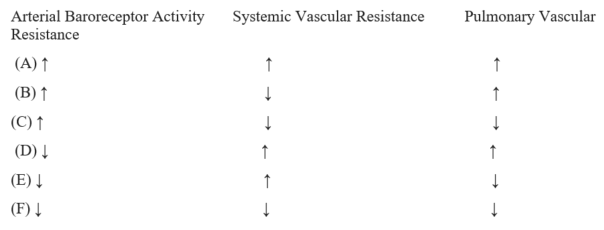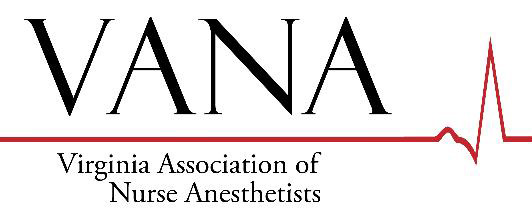Spring Boards Questions
- A patient with diabetic nephropathy is undergoing a radiologic procedure with radiocontrast dye under general anesthesia. What actions by the anesthesia provider will limit the renal effects of the dye?
- Administration of ketorolac (Toradol)
- Pre-hydration with IV fluids
- Pretreatment with N-acetylcysteine
- Use of hypotensive technique
- During the luteal phase of the female reproductive cycle, there is a surge of Luteinizing Hormone (LH). What mechanism is responsible for the suppression of Follicle Stimulating Hormone (FSH) and not LH?
- Estrogen secretion from the primary follicles
- Progesterone secreted from corpus luteum
- Inhibin secreted from the corpus Luteum
- Estrogen secreted from the secondary follicles
- What are the key differences between a diabetic coma and a hypoglycemic coma? (Select 2)
- Acetone breath
- Rapid deep breathing
- Seizures
- Cardiac changes
- Muscle twitches
- What is a possible outcome for a patient who suffered a ruptured ileum and distal jejunum due to a motor vehicle accident? The patient subsequently had to undergo resection of the entire ileum and portion of the jejunum.
- Vitamin B12 deficiency
- Gastric ulcer
- Constipation
- Gastroesophageal reflux disease (GERD)
- Gastritis
- In Pregnancy induced hypertension where vast amounts of proteins are lost in the urine (Preeclampsia), what organs are most often effected by arterial spasm. Select 3.
- Brain
- Lungs
- Heart
- Liver
- Spleen
- Kidneys
- Stomach
- Thyroid
- How does the action potential of cardiac muscle differ from that of skeletal muscle? Select two.
- The permeability of the cardiac muscle membrane for potassium decreases after the onset of the action potential.
- The plateau phase of the cardiac action potential is caused by the opening of potassium channels.
- The action potential of cardiac muscle is reliant on L-type calcium channels.
- The action potential of cardiac muscle is reliant on slow sodium channels.
- Which of the following changes tends to increase GFR?
- Increased afferent arteriolar resistance
- Decreased efferent arteriolar resistance
- Increased glomerular capillary filtration coefficient
- Increased Bowman’s capsule hydrostatic pressure
- Decreased glomerular capillary hydrostatic pressure
- Secretion of which substance prevents autodigestion of the pancreas?
- Cholecystokinin
- Trypsin inhibitor
- Pancreatic amylase
- Secretin
- Which of the following neurotransmitters is involved in presynaptic inhibition?
- Serotonin
- GABA
- Norepinephrine
- Acetylcholine
- Upon vectorial analysis of a three standard limb lead ECG, left axis deviation is noted. Which in NOT a contributing factor?
- congenital enlargement of the left ventricle
- left bundle branch block
- aortic valve stenosis
- pulmonary hypertension
- hypertension
- In regards to the vagal effect: The release of acetylcholine increases the permeability of conductive fiber membranes to __ ions, allowing rapid leakage of the ion and ___.
- K+/ Depolarization
- K+/ Hyperpolarization
- Na+/ Depolarization
- Na+/ Hyperpolarization
- What two factors can increase the quantity of O2 that binds with hemoglobin?
- Fetal hemoglobin
- Increased pH
- Increased carbon dioxide
- Increased temperature
- Increased 2,3,-biphosphoglycerate
- Growth hormone secretion is stimulated by which two factors:
- Increased blood glucose level
- Exercise
- Aging
- MAT
- Starvation
- Which of the following shift the O2-hemoglobin dissociation curve to the right?
- Low temperature
- Low CO2 concentration
- High CO2 concentration
- Decreased H+ concentration
- Which of the following are muscles of inspiration? (Choose 3)
- Internal intercostals
- External intercostals
- Sternocleidomastoid
- Abdominal recti
- Anterior serrati
- Which of the following opposes filtration across the glomerular capillaries? (Choose 2)
- Glomerular colloid osmotic pressure
- Glomerular hydrostatic pressure
- Bowman’s capsule hydrostatic pressure
- Bowman’s capsule osmotic pressure
- Which of the following factors would cause vasodilation of local blood vessels?
- Decrease in hydrogen ion concentration
- Increase in calcium ion concentration
- Decrease in potassium ion concentration
- Increase in magnesium ion concentration
- Which of the following factors would increase glomerular filtration rate?
- Increased Glomerular Capillary Hydrostatic Pressure
- Decreased Glomerular Capillary Colloid Osmotic Pressure
- Decreased Bowman’s Capsule Hydrostatic Pressure
- Decreased Glomerular Capillary Hydrostatic Pressure
- Which of the following factors would increase the secretion of aldosterone?
- Decreased potassium ion concentration
- Increased sodium ion concentration
- Increased angiotensin II concentration
- Increased atrial natriuretic peptide
- A 12-year-old boy with a history of Type 1 Diabetes Mellitus who is on insulin therapy is brought to the doctor’s office with a concern about his growth. The laboratory results show low levels of IGF-1 but normal levels of GH. Why is GH NOT effective in promoting growth in this patient?
- GH activity is inhibited by insulin therapy
- GH cannot be synthesized in the absence of a functional pancreas
- GH requires adequate insulin activity and carbohydrate availability to be effective
- GH is ineffective in children with a history of type 1 diabetes
- A 30-year-old female is brought to the emergency department after being shot in the arm. She is appearing markedly pale and unconscious. Her VSS are HR 120/min, RR 16/min, and BP 80/60 mm Hg. Compared with a healthy individual, which of the following findings is most likely in this patient?
- Which of the following determinants of the glomerular filtration rate oppose filtration (Select 2):
- Glomerular hydrostatic pressure
- Bowman’s capsule hydrostatic pressure
- Glomerular capillary colloid osmotic pressure
- Bowman’s capsule colloid osmotic pressure

Answer Key:
-
1) A
2) C
3) A, B
4) A) Guyton Pg. 834 – The absorption of vitamin B12 occurs in the ileum and relies on the presence of intrinsic factor. Intrinsic factor combines with vitamin B12 within the stomach and protects it from being digested as it passes through the small intestine. Without intrinsic factor, only 1/50th of vitamin B12 can be absorbed and can result in pernicious anemia.
5) A,D,F
Rationale: In addition, function of the vascular endothelium is impaired, and arterial spasms occur in many parts of the mothers body, most significantly in the kidneys, brain, and liver.
Guyton Chapter 83, page 1053 in PDF version
6) A, C.
Explanation: Guyton page 115 “What causes the long action potential and plateau in cardiac muscle?”
7) C. (Guyton Ch. 27, p. 334)
8) B – Guyton pg. 815
9) B. GABA – Guyton Chapter 46, page 578
10) D; choices a,b,c,e would all cause LV hypertrophy leading to a left axis deviation (Guyton pg. 149 &150). Pulmonary hypertension would not be the cause of left axis deviation, but would cause right axis deviation related to hypertrophy of the RV due to increased pulmonary arterial pressure (Guyton pg. 151 &149).
11) B. Guyton and Hall Textbook of Medical Physiology E-Book, Page 132
12) A, B. Guyton and Hall Textbook of Medical Physiology E-Book, 526, 1048
13) b. Exercise and d. Starvation. Increased blood glucose level and aging will actually inhibit growth hormone secretion. Guyton Hall, 14th edition, page 933
14) C: A shift to the right of the O2-hemoglobin disassociation curve can be attributed to increased hydrogen ions, increased CO2, increased temperature, and increased BPG. Guyton and Hall Textbook of Medical Physiology, 14th Edition, Chapter 41: Page 525-526
15) Answer: B, C, E
Reference
Hall, J. E., & Hall, M. E. (2021). Chapter 38-Pulmonary Ventilation. In Guyton and Hall
Textbook of Medical Physiology (14th ed., p. 491). essay, Elsevier.
16) Answer: A, C
Reference
Hall, J. E., & Hall, M. E. (2021). Chapter 27-Glomerular Filtration, Renal Blood Flow, and Their
Control. In Guyton and Hall Textbook of Medical Physiology (14th ed., p. 333). essay,
Elsevier.
17) D: Increase in magnesium ion concentration Guyton Chapter 17- Local and Humoral Control of Blood Flow Page 215
18) A: Increased Glomerular Capillary Hydrostatic pressure
Guyton Chapter 27- Glomerular Filtration, Renal Blood Flow, and Their Control
Page 334-335
19) Answer C-Increased angiotensin II concentration
Guyton Chapter 78 Adrenocortical Hormones
Page 961
20) C
Rationale
The necessity of Insulin and carbohydrates for the Growth-Promoting Action of Growth Hormone.
GH fails to cause growth in animals that lack a pancreas; it also fails to cause growth if carbohydrates are excluded from the diet. Thus, adequate insulin activity and adequate availability of carbohydrates are necessary for GH to be effective. Part of this requirement for carbohydrates and insulin is to provide the energy needed for the metabolism of growth, but there seem to be other effects as well. Especially important is the ability of insulin to enhance the transport of some amino acids into cells, in the same way that it stimulates glucose transport (Guyton, pp. 934).
21) D (Reference: Guyton Ch 14)
22) Answer: B, C
Reference: Guyton & Hall, 14th Edition, pg. 333

